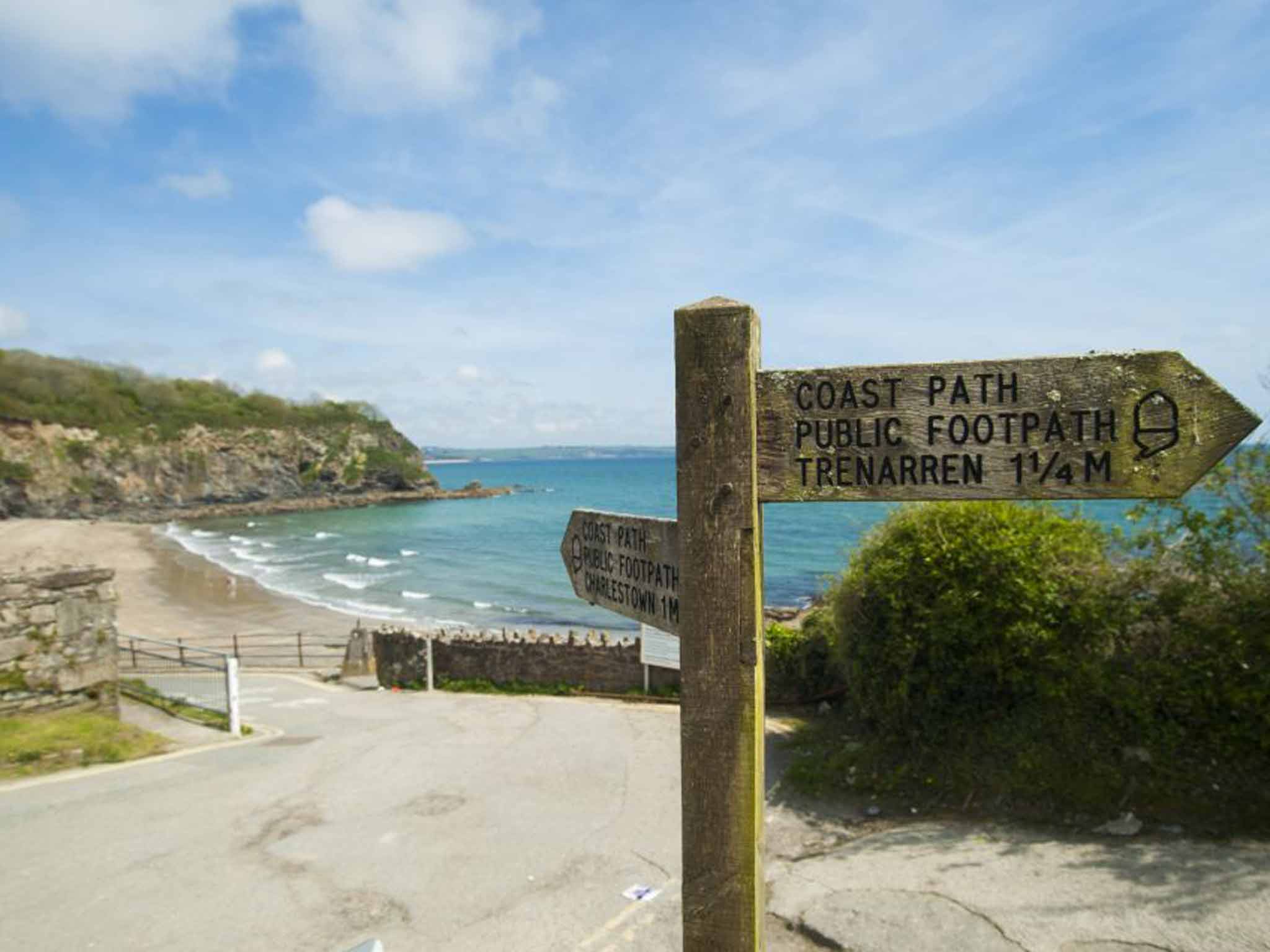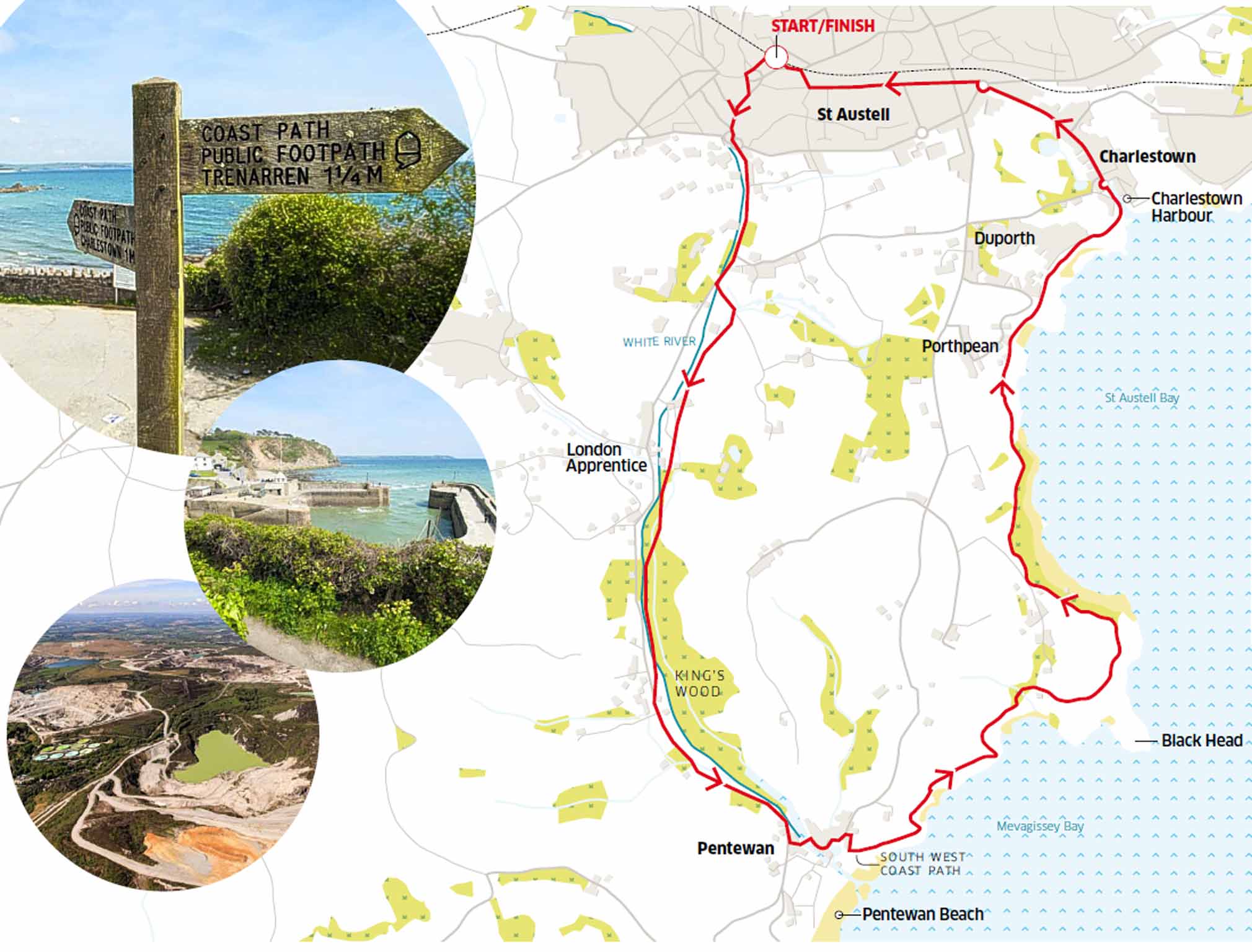Your support helps us to tell the story
From reproductive rights to climate change to Big Tech, The Independent is on the ground when the story is developing. Whether it's investigating the financials of Elon Musk's pro-Trump PAC or producing our latest documentary, 'The A Word', which shines a light on the American women fighting for reproductive rights, we know how important it is to parse out the facts from the messaging.
At such a critical moment in US history, we need reporters on the ground. Your donation allows us to keep sending journalists to speak to both sides of the story.
The Independent is trusted by Americans across the entire political spectrum. And unlike many other quality news outlets, we choose not to lock Americans out of our reporting and analysis with paywalls. We believe quality journalism should be available to everyone, paid for by those who can afford it.
Your support makes all the difference.Even in high season, Cornwall has its forgotten corners, overlooked by tourists, perhaps still recovering from the blows of a declining industrial past. Is St Austell one such place? The town boomed on tin and clay, but is now surrounded and overshadowed by the magnetic pull of the Eden Project, the Lost Gardens of Heligan and the honeypot coastal village of Mevagissey.
I arrive by train high above the town centre, the magnificent stone viaduct, 35m high and 220m long, threading the railway line in and out of the station. Then I begin my walk to the coast through a shopping centre dispiritingly strewn with litter and discount shops.
My mood is lifted as I finally locate my first target, the White River, also known as the St Austell River. Although barely eight miles in length and in places little more than a stream, it is typical of the hundreds of Lilliputian rivers that snake across the UK. All but imperceptible in the town, it emerges doughtily south of a busy roundabout, getting into its stride as it runs alongside Kings Wood.
The waterway's name reflects the industrial past and present of this part of Cornwall. It was originally called the Red River, on account of the tin and other minerals that were extracted from the surrounding land. The more contemporary name reflects the clay deposit colourings that used to enter it. China clay, which comes from the decomposition of moorland granite, was discovered here in 1755 and is still said to be Cornwall's second largest export after pasties; the industry is very much alive, compared to Cornish tin.

Kings Wood too is enchanting, a world of primordial-looking swamps, dragonflies, fallen trunks, and long fingers of trees that curl crookedly upwards as they converge upon the coast. For the most part I plod along the Pentewan cycle trail that cuts through, constantly accompanied by birdsong. I pass the minuscule hamlet of London Apprentice, a place I've wanted to visit for decades (other such Cornish names include Come to Good, Ventongimps and Playing Place).
I leave the wood at Pentewan, a gorgeous stone village whose square stands exposed to Mevagissey Bay. The Cornish name for the village is Bentewyn, which translates as "foot of the radiant stream", and with the picket fences and milk urns, I feel as though I've discovered a Cornish idyll.
Now the route is transformed, and suddenly I'm on the Cornish coast path, being lifted up sharp ascents of smooth, slippery grass and plunged down wooden steps to tiny creeks, where moss-encrusted hawthorn trees stand guard over small wooden footbridges. To the south, low tide exposes the vast sands of Pentewan beach. To the north and east I can see the coast path unfold, and enjoy that satisfying feeling of knowing and seeing exactly where I will walk over the next hour. St Austell is there too, and the clay spoil heaps known as the Cornish Alps.
Among the gleaming backdrop of white peaks and glassy plateaus, I can pick out soay sheep on the fields near the clay pits. Here and there are dazzling turquoise lakes, the colour arising from mica-particles left over from washing the clay.
Porthpean beach proves a delightful place to pause. There's a sandy beach to scuff my boots through, and the cove is sheltered by high-rising cliffs where fledgling fulmars and other gull chicks take their first flights. Steep steps pull me away from Porthpean, the path swoops down one final time, and I spring myself upon the village of Charlestown, where the dock is occupied by a square-rigged sailing ship. It turns out to be one of a fleet of sailing classics that are hired out to film companies. Recent talk may have been of television dramas such as Poldark and Jamaica Inn, but The Onedin Line and Hornblower were the great-grandaddies of the genre, and these ships starred in them.
I return inland to St Austell and the town presents a better face than it had earlier in the day. The 20th-century sprawl of signage, betting and pawn shops, still encumbers much of the town centre, but there are gems too.
The architect Silvanus Trevail made St Austell something of a pet project and built schools, churches and banks here. The star attraction is the Renaissance-style Grade II-listed Market House, now home to a café and a small museum. There's a brewery too, and on the junction of Trinity Street and Truro road I smile at the "China Café", a mural of a local cast of characters, by trompe-l'oeil artist Janet Shearer.
I find myself liking St Austell. This is a living Cornish town and I'm reminded of Jan Morris's comment on Trieste as a place that refuses to "crassly subject its true nature to the satisfaction of its visitors". You could never level that accusation at St Austell.
Getting there
First Great Western (0345 700 0125; firstgreatwestern.co.uk) runs from London Paddington, Reading, Bristol and Exeter to St Austell.
Staying there
Mark Rowe stayed at Natural Retreats Trewhiddle, St Austell (01625 839627; naturalretreats.com). Two nights in a two-bedroom cottage from £289.
DISTANCE 12 miles/20km
TIME Five hours
START/ FINISH St Austell railway station
OS MAPS Explorer 105 Falmouth and Mevagissey, and Explorer 107 St Austell and Liskeard.
DIRECTIONS From the railway station head downhill, cross the A390 roundabout, and take the Mevagissey Road, picking up the Pentewan cycle trail. Follow this to Pentewan and take the eastbound South West Coast Path, signposted for Trenarren. At Charlestown, walk up the road to the roundabout and follow the signs for St Austell railway station. Alternatively, regular buses run from Charlestown to St Austell (traveline.info).

Join our commenting forum
Join thought-provoking conversations, follow other Independent readers and see their replies
Comments